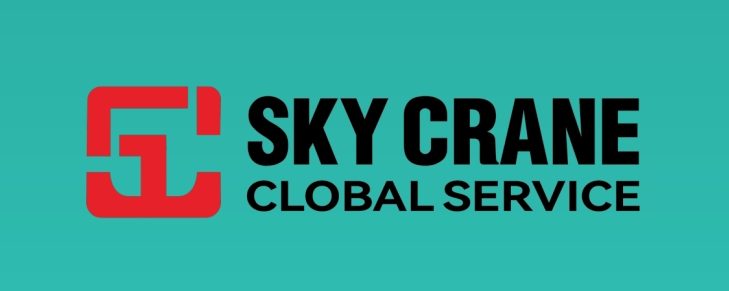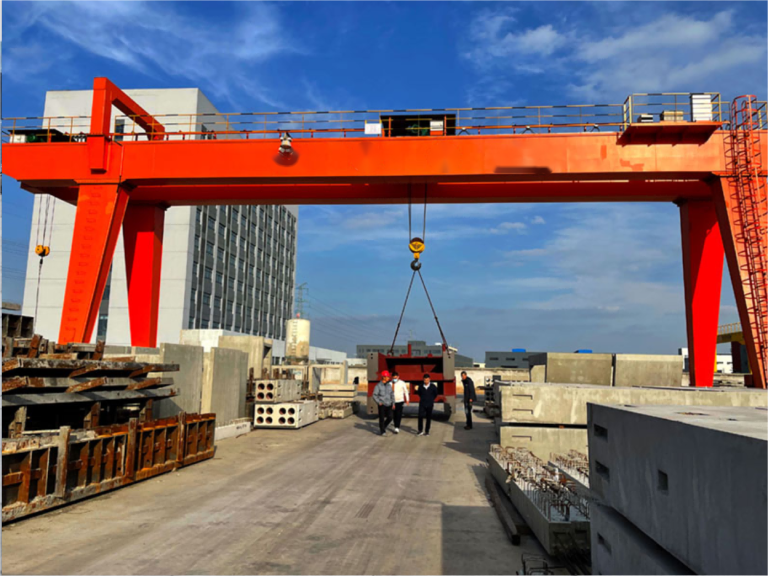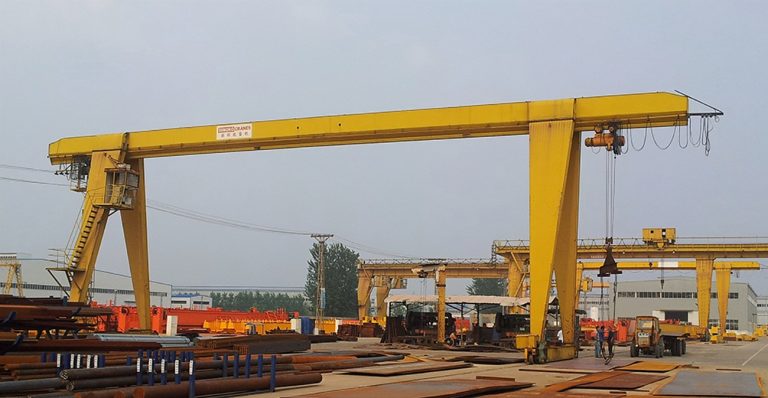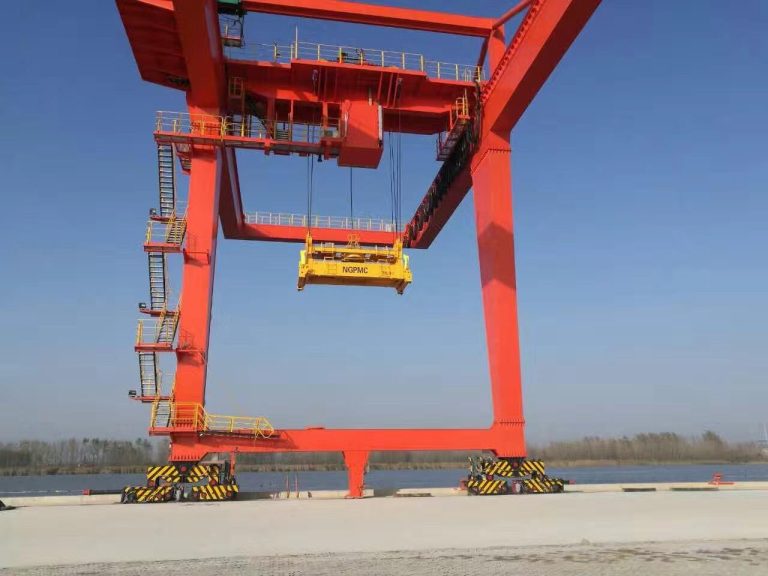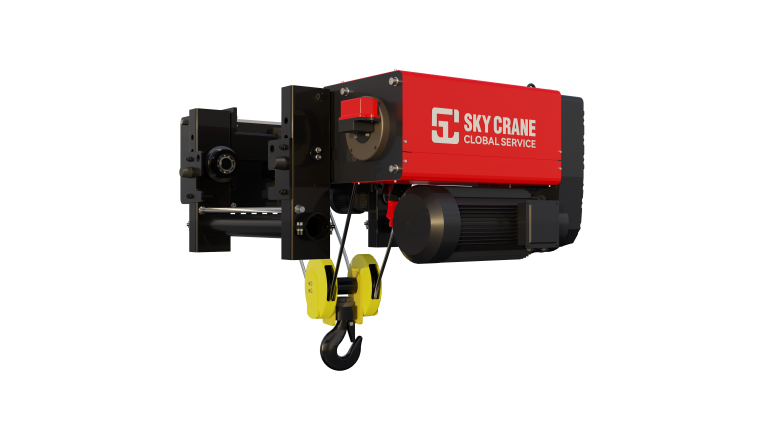Table of Contents
औद्योगिक अनुप्रयोगहरूमा मेटलर्जिकल ब्रिज क्रेन प्रयोग गर्ने फाइदाहरू
रेल-माउन्टेड कन्टेनर ग्यान्ट्री क्रेनको मुख्य विशेषताहरू र फाइदाहरू
न।
उत्पादनको नाम
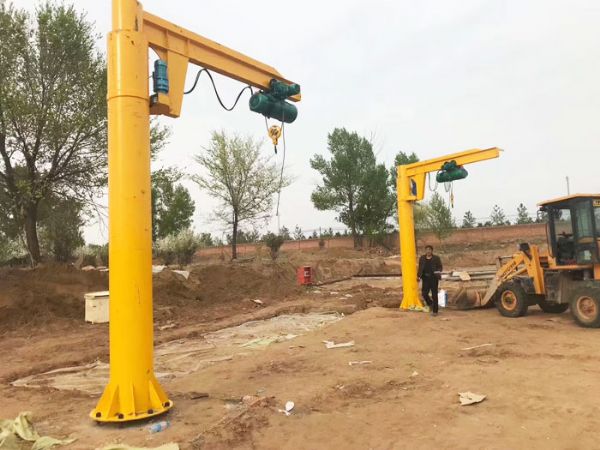
LX इलेक्ट्रिक निलम्बन क्रेन
| MH र्याक क्रेन | युरोपेली शैली क्रेन |
| 1 | हार्बर क्रेन |
| 2 | मेटलर्जिकल ब्रिज क्रेन र रेल-माउन्ट कन्टेनर ग्यान्ट्री क्रेन सामग्री ह्यान्डलिंग सञ्चालनमा तुलना |
| 3 | मेटलर्जिकल ब्रिज क्रेनहरू र रेल-माउन्ट कन्टेनर ग्यान्ट्री क्रेनहरू दुई प्रकारका भारी-कर्तव्य क्रेनहरू हुन् जुन सामान्यतया सामग्री ह्यान्डलिंग कार्यहरूमा प्रयोग गरिन्छ। दुबैले भारी भारहरू उठाउने र सार्नको उद्देश्य पूरा गर्दा, त्यहाँ दुई बीचको मुख्य भिन्नताहरू छन् जसले प्रत्येकलाई विशिष्ट अनुप्रयोगहरूको लागि उपयुक्त बनाउँदछ।
मेटलर्जिकल ब्रिज क्रेनहरू मेटलर्जिकल प्लान्टहरू, फाउन्ड्रीहरू र अन्य औद्योगिक सेटिङहरूमा प्रयोगको लागि डिजाइन गरिएका छन् जहाँ उच्च तापक्रम र कठोर वातावरण सामान्य छ। यी क्रेनहरू विशेष सुविधाहरू जस्तै गर्मी ढाल, कूलिंग प्रणाली, र चरम अवस्था सामना गर्न सुरक्षा कोटिंग्स संग सुसज्जित छन्। मेटलर्जिकल ब्रिज क्रेनहरूको मुख्य फाइदा भनेको मानक क्रेनहरूले प्रभावकारी रूपमा काम गर्न नसक्ने वातावरणमा काम गर्ने तिनीहरूको क्षमता हो। ट्रक र जहाजहरूबाट ढुवानी कन्टेनरहरू। यी क्रेनहरू रेलहरूमा माउन्ट गरिएका छन् र विभिन्न जहाज वा ट्रकहरूमा कन्टेनरहरू पुग्न डकको लम्बाइमा जान सक्छन्। रेल-माउन्ट गरिएको कन्टेनर ग्यान्ट्री क्रेनहरू छोटो समयमा ठूलो मात्रामा कन्टेनरहरू ह्यान्डल गर्न तिनीहरूको दक्षता र गतिका लागि परिचित छन्। मेटलर्जिकल ब्रिज क्रेनहरू र रेल-माउन्ट कन्टेनर ग्यान्ट्री क्रेनहरू बीचको मुख्य भिन्नताहरू मध्ये एउटा तिनीहरूको गतिशीलता हो। मेटलर्जिकल ब्रिज क्रेनहरू सामान्यतया स्थिर हुन्छन् र सुविधा भित्र एक निश्चित स्थानमा स्थापित हुन्छन्। यसको विपरित, रेल-माउन्ट कन्टेनर ग्यान्ट्री क्रेनहरू मोबाइल हुन् र पोर्ट वा टर्मिनलको विभिन्न क्षेत्रहरूमा पुग्न रेलहरूसँगै जान सक्छन्। यो गतिशीलताले रेल-माउन्ट कन्टेनर ग्यान्ट्री क्रेनहरूलाई ठूलो संख्यामा कन्टेनरहरू ह्यान्डल गर्न र व्यस्त बन्दरगाह वातावरणमा उत्पादकता बढाउन अनुमति दिन्छ। दुई प्रकारका क्रेनहरू बीचको अर्को भिन्नता तिनीहरूको उठाउने क्षमता हो। मेटलर्जिकल ब्रिज क्रेनहरू औद्योगिक सेटिङहरूमा भारी भारहरू उठाउन डिजाइन गरिएका छन्, केही टनदेखि धेरै सय टनसम्म लिफ्टिङ क्षमताहरू सहित। रेल-माउन्ट गरिएको कन्टेनर ग्यान्ट्री क्रेनहरू, अर्कोतर्फ, विशेष रूपमा ढुवानी कन्टेनरहरू ह्यान्डल गर्नका लागि डिजाइन गरिएको हो, लिफ्ट गर्ने क्षमता सामान्यतया 30 देखि 70 टन सम्मको हुन्छ। मेटलर्जिकल ब्रिज क्रेनहरूको उच्च लिफ्टिंग क्षमताले तिनीहरूलाई भारी-शुल्क लिफ्टिङ अनुप्रयोगहरूको लागि उपयुक्त बनाउँछ, जबकि रेल-माउन्ट कन्टेनर ग्यान्ट्री क्रेनहरू कन्टेनरहरू कुशलतापूर्वक ह्यान्डल गर्नका लागि अनुकूलित हुन्छन्। क्रेनमा रहेको कन्ट्रोल रुम वा केबिनबाट क्रेनलाई नियन्त्रण गर्दछ। रेल-माउन्ट कन्टेनर ग्यान्ट्री क्रेनहरू, अर्कोतर्फ, प्राय: कम्प्युटरीकृत नियन्त्रण प्रणाली प्रयोग गरेर टाढाबाट सञ्चालन गरिन्छ। यसले अपरेटरहरूलाई सुरक्षित दूरीबाट क्रेनलाई निगरानी र नियन्त्रण गर्न अनुमति दिन्छ, कन्टेनर ह्यान्डलिङ सञ्चालनहरूमा सुरक्षा र दक्षता सुधार गर्दछ। फाइदा र अनुप्रयोगहरूको आफ्नै सेट। मेटलर्जिकल ब्रिज क्रेनहरू कठोर वातावरणमा भारी शुल्क उठाउनको लागि आदर्श हुन्, जबकि रेल-माउन्ट कन्टेनर ग्यान्ट्री क्रेनहरू बन्दरगाह र टर्मिनलहरूमा ढुवानी कन्टेनरहरू ह्यान्डल गर्नमा उत्कृष्ट हुन्छन्। यी दुई प्रकारका क्रेनहरू बीचको भिन्नता बुझ्नले व्यवसायहरूलाई तिनीहरूको विशिष्ट सामग्री ह्यान्डलिंग आवश्यकताहरूको लागि सही उपकरणहरू छनौट गर्न मद्दत गर्न सक्छ। |
| 4 | Harbour crane |
In conclusion, rail-mounted container gantry cranes are essential equipment for ports and terminals that handle large volumes of containers. These cranes offer key features such as heavy lifting capacity, versatility, efficiency, and safety. They also provide several advantages, including the ability to handle different types of containers and cost-effectiveness. Overall, rail-mounted container gantry cranes are a valuable asset for any port or terminal looking to streamline their cargo handling operations.
Comparison of Metallurgical Bridge Crane and Rail-Mounted Container Gantry Crane in Material Handling Operations
Metallurgical bridge cranes and rail-mounted container gantry cranes are two types of heavy-duty cranes commonly used in material handling operations. While both serve the purpose of lifting and moving heavy loads, there are key differences between the two that make each suitable for specific applications.
Metallurgical bridge cranes are designed for use in metallurgical plants, foundries, and other industrial settings where high temperatures and harsh environments are common. These cranes are equipped with special features such as heat shields, cooling systems, and protective coatings to withstand extreme conditions. The main advantage of metallurgical bridge cranes is their ability to operate in environments where standard cranes would not be able to function effectively.
On the other hand, rail-mounted container gantry cranes are commonly used in ports and container terminals for loading and unloading shipping containers from trucks and ships. These cranes are mounted on rails and can move along the length of the dock to reach containers on different ships or trucks. Rail-mounted container gantry cranes are known for their efficiency and speed in handling large volumes of containers in a short amount of time.
One of the key differences between metallurgical bridge cranes and rail-mounted container gantry cranes is their mobility. Metallurgical bridge cranes are typically stationary and are installed in a fixed location within a facility. In contrast, rail-mounted container gantry cranes are mobile and can move along the rails to reach different areas of a port or terminal. This mobility allows rail-mounted container gantry cranes to handle a larger number of containers and increase productivity in a busy port environment.
Another difference between the two types of cranes is their lifting capacity. Metallurgical bridge cranes are designed to lift heavy loads in industrial settings, with lifting capacities ranging from a few tons to several hundred tons. Rail-mounted container gantry cranes, on the other hand, are specifically designed for handling shipping containers, with lifting capacities typically ranging from 30 to 70 tons. The higher lifting capacity of metallurgical bridge cranes makes them suitable for heavy-duty lifting applications, while rail-mounted container gantry cranes are optimized for handling containers efficiently.
In terms of operation, metallurgical bridge cranes are usually operated by a cab operator who controls the crane from a control room or cabin located on the crane itself. Rail-mounted container gantry cranes, on the other hand, are often operated remotely using a computerized control system. This allows operators to monitor and control the crane from a safe distance, improving safety and efficiency in container handling operations.
In conclusion, both metallurgical bridge cranes and rail-mounted container gantry cranes play important roles in material handling operations, each with its own set of advantages and applications. Metallurgical bridge cranes are ideal for heavy-duty lifting in harsh environments, while rail-mounted container gantry cranes excel in handling shipping containers in ports and terminals. Understanding the differences between these two types of cranes can help businesses choose the right equipment for their specific material handling needs.
